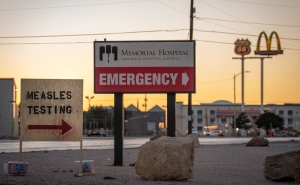Study Estimates That More Than Half of U.S. Hospitals Not in Compliance With New Pricing Disclosure Rules in First Five Months
Compliance with new requirement linked to regional hospital compliance, information technology preparedness

A study led by researchers at the Johns Hopkins Bloomberg School of Public Health that examined U.S. hospital compliance with new rules requiring hospitals to disclose prices found wide fluctuations across states, with some states achieving 75 percent or higher compliance and others coming in at 25 percent or lower. Taken together, more than half—55 percent—of U.S. hospitals were not compliant with the new federal rule that went into effect January 1 this year.
The study ranked publicly available hospital compliance information for all 50 states, the District of Columbia, and 305 geographic regions in the U.S. The researchers based their analysis on files from more than 3,500 U.S. hospitals in the first five months of 2021, January 1 through June 1.
At least 75 percent of hospitals were compliant in the District of Columbia, Hawaii, Rhode Island, Indiana, and Michigan. In contrast, at most, 25 percent of hospitals were compliant in Delaware, Maryland, Washington, and Louisiana. The researchers also found that a hospital’s compliance status was strongly associated with the average compliance level of peer hospitals in the same regional market. A hospital would be 42 percent more likely to be compliant if all other hospitals in the same geographic region were compliant as well.
The study was published online December 9 in the Journal of General Internal Medicine.
“The findings suggest that hospitals do not make decisions in isolation, rather their decisions reflect market pressure from their peers,” says the study’s senior author, Ge Bai, PhD, CPA, professor in the Department of Health Policy and Management at the Johns Hopkins Bloomberg School of Public Health and professor of accounting at the Johns Hopkins Carey Business School. “If the average compliance status in the same region is high, a hospital is more likely to comply.”
John Jiang, PhD, a professor of accounting and information systems at Michigan State University’s Broad College of Business, is the paper’s first author.
The Hospital Price Transparency Rule—managed by the Centers for Medicare and Medicaid Services—requires individual hospitals to provide clear pricing information online about the services they provide. The information must be posted in a file format that can be imported or read into a computer system, also known as a machine-readable file. Hospitals must also include standard pricing for at least 300 services, ranging from colonoscopies to CAT scans. Hospitals are not required to disclose prices for emergency services under the new rule.
The rule is designed to allow consumers to compare prices and estimated cost of services. It can also help patients make more informed decisions about care, increase hospital competition, and potentially drive down costs. Non-compliant hospitals can face steep penalties—up to $2 million a year until they share pricing information in compliance with the new requirements.
The researchers, using data from Turquoise Health, a data service company that collects hospital pricing information, analyzed a nationally representative sample of machine-readable files from 3,558 general acute hospitals—which represents 88 percent of general acute hospitals in the U.S.—from the January 1 to June 1 study period. The researchers categorized hospitals based on “compliance”—a hospital that posted a machine-readable file with negotiated prices for at least one health insurance plan—and “noncompliance”—a hospital that had not posted a machine-readable file and no negotiated prices.
For their study, the researchers also looked at compliance among the country’s 305 hospital referral regions. The researchers found that in 194 hospital referral regions, or 64 percent, more than half of hospitals were not compliant with the new disclosure requirement. All hospitals in 20 referral regions, including regions in Arizona, Connecticut, Georgia, Illinois, Indiana, Kentucky, Michigan, North Carolina, New Jersey, Pennsylvania, Tennessee, and Virginia, were compliant. On the contrary, all hospitals in 26 regions, including regions in Arkansas, California, Delaware, Florida, Iowa, Illinois, Louisiana, Maryland, Mississippi, Ohio, South Carolina, Texas, Virginia, and West Virginia, were noncompliant.
A hospital’s health information technology preparedness—defined as the proportion of a hospital’s fixed assets devoted to health IT purposes—is also associated with greater compliance, as were for-profit hospitals, system-affiliated hospitals, and non-urban hospitals.
“Interestingly, hospitals that have invested more in health IT are more likely to post their pricing information online,” says Bai. “This could be because they have more financial resources and personnel to mitigate the cost for implementing the Price Transparency Rule.”
“Factors Associated with Compliance to the Hospital Price Transparency Final Rule: A National Landscape Study” was written by John Jiang, Daniel Polsky, Jeff Littlejohn, Yuchen Wang, Hossein Zare, and Ge Bai.
The study was supported by Arnold Ventures.
# # #
Media Contacts: Caitlin Hoffman at choffman@jhu.edu and Carly Kempler at ckemple2@jhu.edu.




